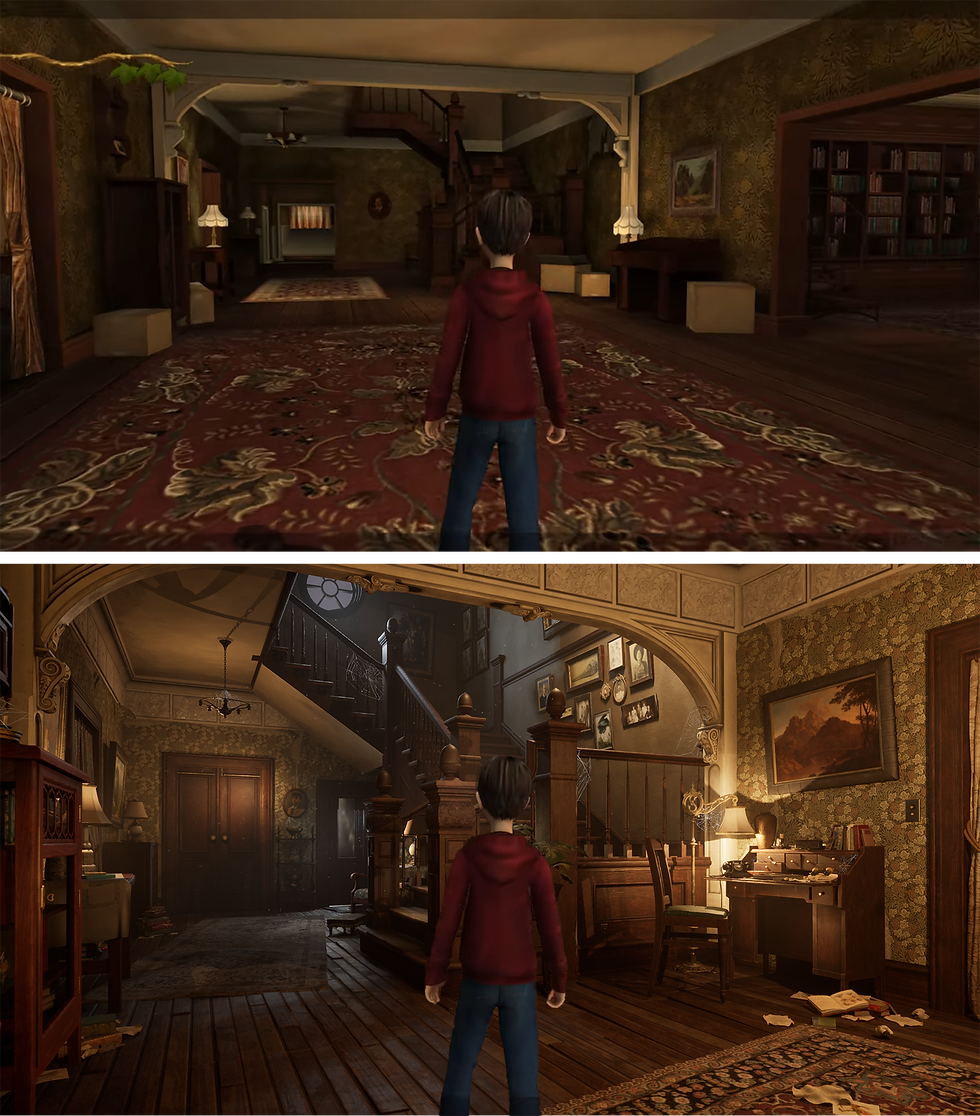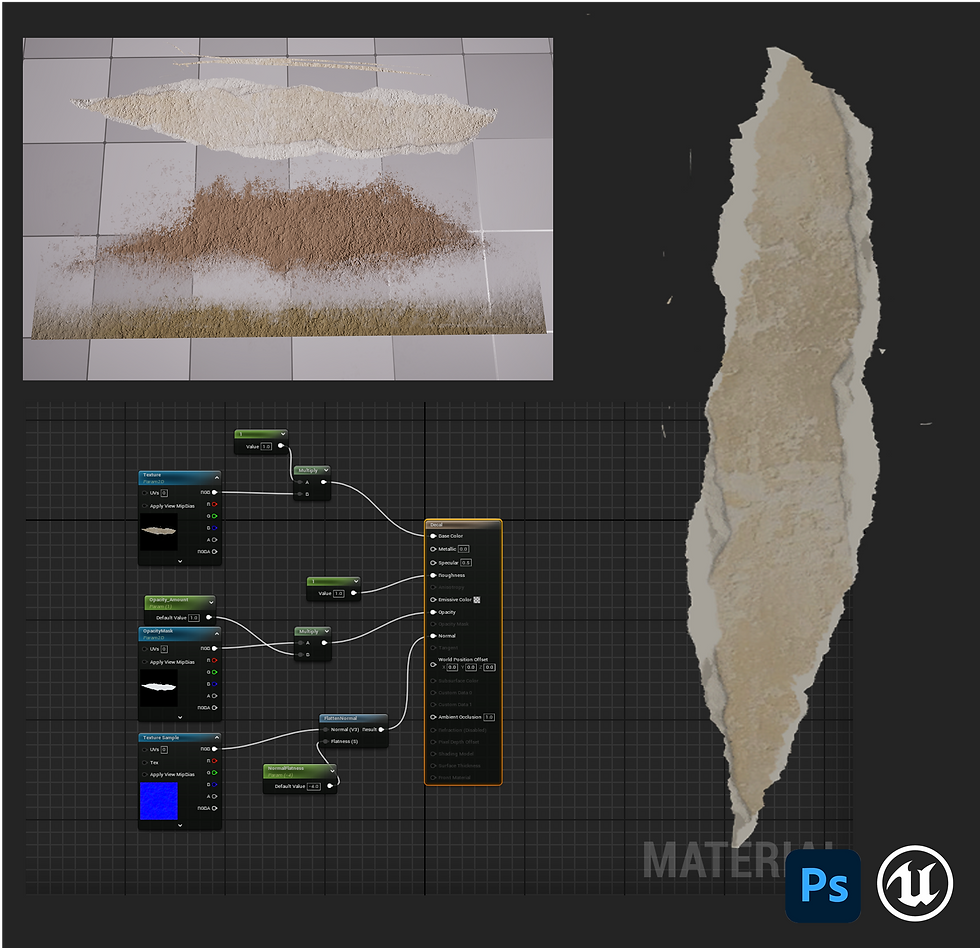Introduction to GAR203
- Jack Ferrari
- Oct 1, 2024
- 4 min read
Updated: Oct 15, 2024
BRIEF:
“Create a cinematic in UE5.1 of a 3D game environment based on a live-action film / television series of your choice using professional content creation tools and development workflows.”
Brief specifics:
• Your scene must be based on a scene from a live-action film or TV series.
• Your scene must be rendered in Unreal 5.1
• Software to be used in the module – Autodesk Maya, Pixologic Zbrush, Substance Painter & Designer, Unreal Engine.
• The cinematic should be between 30 seconds and 1 minute in duration.
• Any post work done that changes the look or the final cut must be done separately to the cut pre any post-production.
• You can use any technology available to you in the game engine and experimentation is to be encouraged.
• Your scene must be designed to be played as a game level but does not need to function as such.
• Attention will be paid to texture sizes, poly counts and topology of your assets to ensure appropriate thought is paid to the performance of your scene.
• You can take artistic license on layout and design as long as they can be justified.
• Your scene must operate at a consistent frame rate (no lower than 30fps) on a Games lab machine (even though it will not be played).
• Try to demonstrate dynamic elements which are visible in real-time in the level these can be environmental, mechanical or character based.
• You can use existing assets available in the game engine as long as they are an appropriate fit with your level’s look and feel.
• Music can be used to accompany the cinematic as long as it helps to convey the mood of the scene.
IDEAS:
For this project I am currently looking at tackling the house from the 2008 movie “The Spiderwick Chronicles” (a stand alone film/ book series that used to both frighten and delight me as a child)
For this project I have 2 options:
The Interior scenes of the house would align far better with the brief and likely be the more sensible and manageable option. (Would be the main downstairs hallway and maybe attached rooms)
The exterior of the house and surrounding environment. At first glance seems unwise and exhaustive but from my previous Diagon Alley project I have really gained an interest in Foliage creation and this option would entail far more of that. With the house itself being a relatively small collection of modular assets and simple selection of tileable textures.
Inside Pros/ Cons
Far more dense with modeled props (this can be done modularly somewhat, but would be the main sluggish time sink)
Less room for dynamic elements (relatively static scene)
Can really push small details and produce a likely more cohesive scene that looks hopefully convincingly real.
Less demanding on hardware (accessibility)
Outside Pros/Cons
Foliage can be expensive to simulate/ optimize (Transparency, Shaders, LODs etc…)
Foliage is a more complicated process than regular prop creation (especially trees)
Far less forgiving when it comes to rendering/ results, bad outside scenes are far more common and look MUCH worse than lower quality interior scenes.
Is a workflow I’m more interested in exploring and would allow me to learn something that could be implemented into GAM202/ Future Projects
Base assets are far simpler so time can be spent getting them to higher quality and any additional props will carry more weight thus can also be of better standard.
Easily implement dynamic systems to enhance both believability and visual intrigue.
Either way I will be developing on a useful skill set so ultimately it comes down to: Props or Foliage….
Paramount Pictures (2008)
Director: Mark Water
Production Designer: Jim Bissell
Set Designer: Brent Lambert
"The Spiderwick Estate is virtually a complete character itself in the movie. What at first seems to be a musty, secluded old mansion in bad need of repair, slowly opens up to reveal a fascinating and mysterious history. Odd creatures lurk in the walls; even odder ones are trying to get in to steal the Field Guide, the lifelong research of the home’s original owner, Arthur Spiderwick" [1]
One fact I particularly enjoyed discovering when researching this film was that the entire house was built on site exclusively for the film. Having found a location at Cap-Saint-Jacques they constructed the entire building, left it up for a year and then sadly tore the entire thing down. Is a polar opposite approach to many films and TV Shows nowadays, all too eager to throw actors infront of endless blue screens.
“We found a beautiful glade in a park called Cap-Saint-Jacques, and there was a little shack there, probably built in the 1950s. The city and the park graciously let us tear it down and build our house there,” [2]
Using Procreate I split the 2 scenes out into a basic plan for each modular kits. Again will be deciding only one of these scenes but neither has an enormous range of required parts and felt a good exercise to try and narrow down my choice. I also separated and planned a basic overview of how many materials I would need for each scene.
I also found an immensely helpful set design portfolio post by Brent Lambert (The set designer for the movie) that goes into detail for several assets. I particularly love his pencil drawings of the stair spindles and newel post designs. I can already tell I will be constantly referring back to this document:
[1] [2] 2008 Movie Releases. (2014). The Spiderwick Chronicles | 2008 Movie Releases. [online] Available at: http://madeinatlantis.com/movies_central/2008/spiderwick_chronicles.htm [Accessed 10 Oct. 2024].
[3] Brentlambertart.com. (2020). The Spiderwick Chronicles – Brent Lambert. [online] Available at: https://brentlambertart.com/portfolios/the-spiderwick-chronicles/ [Accessed 14 Oct. 2024].



















Comments